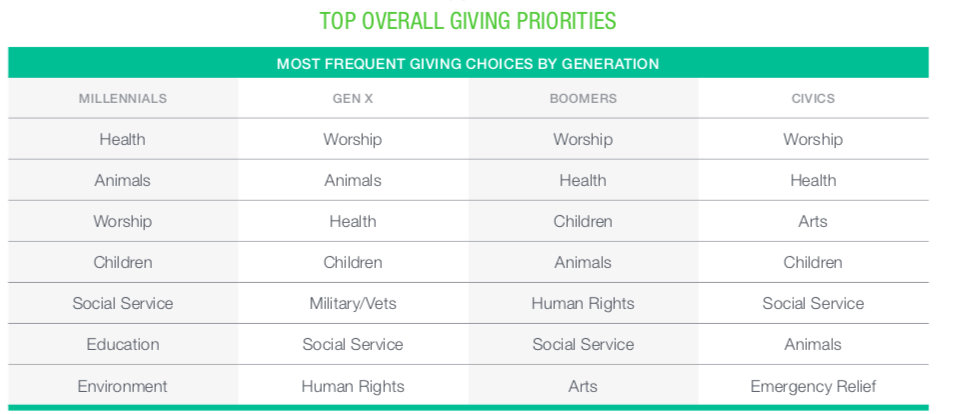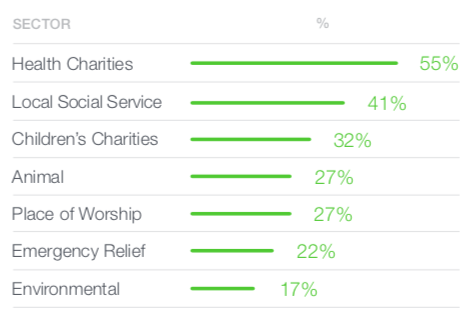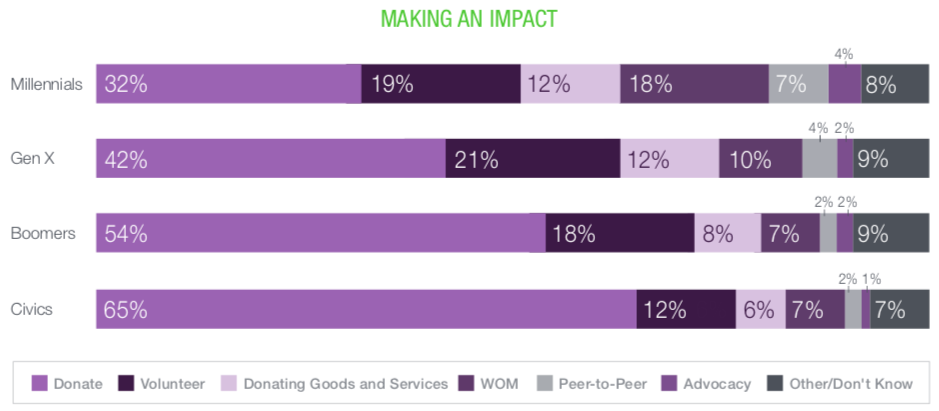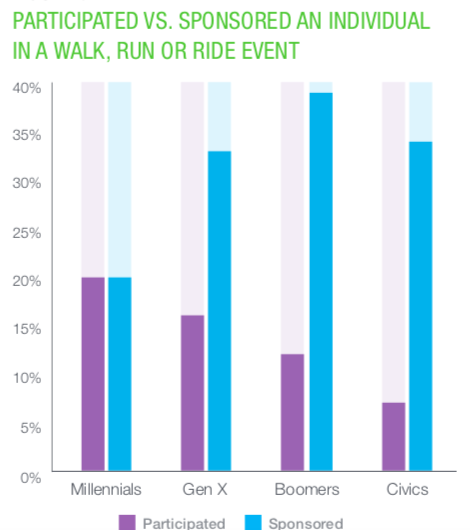- Home
- About Us
- The Team / Contact Us
- Books and Resources
- Privacy Policy
- Nonprofit Employer of Choice Award

Each generation brings its own experiences and values to giving. While there are many commonalities among generations, there are important differences worth noting. In the updated version of the Next Generation of Canadian Giving research, some important trends have emerged.
Donor Attitudes and Values

Giving priorities differ by generation, but not much has changed over the last five years. As the figure above shows, giving priorities have remained largely unchanged since the 2013 study. Together, health charities, local social services and children’s causes make up the largest share of the philanthropic wallet overall.

Places of worship continue to be important, and animal causes have increased in priority. For all but Millennials, places of worship receive the single largest allocation of giving dollars when asked to prioritize. For Millennials, health charities dominate.
Looking across generations, health and religion continue to sit at the top of the list of donors’ giving priorities. Some small differences among generations do exist. Civics are more likely to prioritize arts. Generation X and Millennials are disproportionately committed to animal-related causes.
For all but Millennials, places of worship receive the single largest allocation of giving dollars when asked to prioritize. For Millennials, health charities dominate.
Older donors prioritize money as their greatest form of impact

We asked survey participants how they thought they could make the biggest difference with causes and charities. Choices included giving money, volunteering, participating in activism and spreading the word, among others.
As it has been in the past, the older you are, the more likely you are to prioritize monetary contributions as making the biggest difference (see Figure above). Similar numbers of Millennials, Gen-Xers and Boomers choose volunteering as their contribution of choice.
Peer-to-peer fundraising: A perfect generational partnership?

Peer-to-peer fundraising—including the runs, walk-a-thons and bike-a-thons that are especially popular in the health sector— draws upon all generations, but in different ways. As Figure 6 suggests, the actual walkers, bikers and other participants are more likely to be Generation X or younger. Conversely, those most likely to sponsor said athletes are Boomers, Civics and Gen-Xers. It’s one of the few possible instances of generational symbiosis in the data.
Some organizations have struggled to retain peer-to-peer event donors, because the donor is initially brought in by a friend or relative instead of directly through passion for the cause. Making the most of an investment in peer-to-peer
While generations share many interests and priorities in common, there are important differences. There are some important trends, particularly in the realm of giving to worship that are worth noting. This research can help your charity determine what audience is the best fit for your cause.
From The Next Generation of Canadian Giving (2018) by The Blackbaud Institute and hjc.